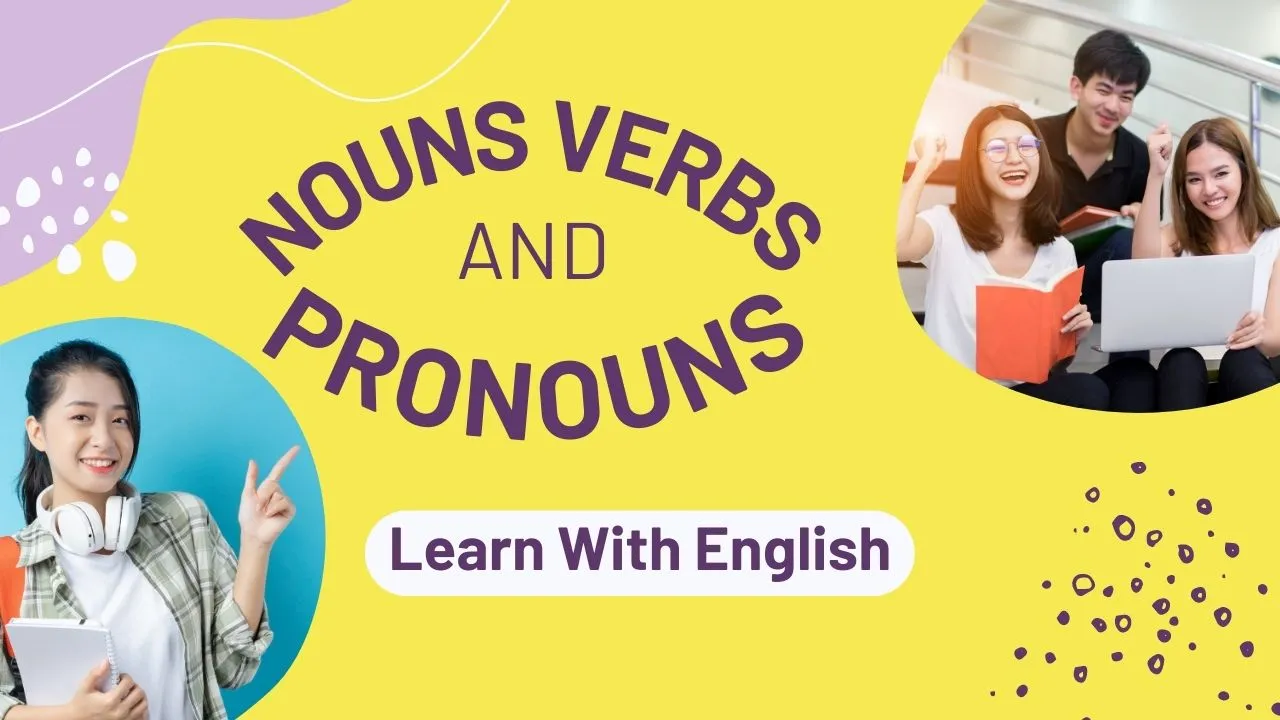As an English student, it’s important to understand basic English grammar nouns verbs, and pronouns.
Nouns, verbs, and pronouns are essential building blocks for speaking and writing any language – especially English!
Knowing how to use these three-word types properly can go a long way in improving your command of modern English. Luckily, understanding basic English grammar doesn’t have to be complicated.
In this article, we’ll cover everything you need to know about nouns, verbs, and pronouns so that you can improve your mastery of the language with ease.
Understand Basic English Grammar in Excel in life.
Read on if you want tips from an experienced hand – I’m here to impart advice as if I were speaking to a good friend!
Nouns and verbs are two of the most important parts of speech in the English language. A noun phrase is used to name people, places, things, and ideas, while verbs are used to describe actions, states, and processes.
The best sentences are clear and concise., use nouns and verbs effectively. A sentence should have a subject, typically a noun, and a verb describing what the subject is doing. For example, “The cat sat on the mat.” In this sentence, “cat” is the noun, and “sat” is the verb.
Another way to use nouns and verbs is to vary the types of nouns and verbs you use in your writing.
For example, you can use common nouns, proper nouns, abstract nouns, and collective nouns to add depth and variety to your writing. Common nouns refer to general things, such as “cat” or “dog.” Proper nouns are nouns that refer to specific people, places, or things, such as “George Washington” or “New York City.”
Abstract nouns are nouns that refer to ideas or concepts, such as “love” or “happiness.” Collective nouns are nouns that refer to groups of things, such as “team” or “class.”
Verbs, too, can be varied in your writing. There are different types of verbs, such as action verbs, linking verbs, and helping verbs. Action verbs describe actions, such as “run” or “jump.”
Linking verbs connect the subject of a sentence to additional information about the subject, such as “is” or “seem.” Helping verbs are used along with main verbs to create verb phrases, such as “will jump” or “have run.”
Using a variety of nouns and verbs in your writing can help make it more interesting and engaging for your readers.
It can also help you to better convey your ideas and thoughts clearly and concisely. So next time you’re writing, take some time to think about the nouns and verbs you’re using and see if you can add some variety to your writing.
Pronouns are another important part of speech in the English language. Pronouns are used to refer to people, places, things, or ideas without repeating the same nouns over and over again.
For example, instead of saying “Sally went to the store. Sally bought milk and bread at the store,” you could use pronouns to say “She went to the store. She bought milk and bread there.”
There are many different types of pronouns in the English language, including personal pronouns, possessive pronouns, reflexive pronouns, and relative pronouns. Personal pronouns are used to refer to the people or things that are being talked about in a sentence, such as “I,” “you,” “he,” “she,” “it,” “we,” or “they.”
Possessive pronouns are used to show ownership, such as “my,” “your,” “his,” “her,” “its,” “our,” or “their.” Reflexive pronouns are used when the subject and the object of a sentence are the same, such as “myself,” “yourself,” “himself,” “herself,” “itself,” “ourselves,” or “themselves.”
Relative pronouns are used to introduce subordinate clauses, such as “who,” “whom,” “whose,” “which,” or “that.” Using pronouns correctly can help to make your writing more clear and concise.
It can also help to avoid repetition and make your writing more interesting. So next time you’re writing, pay attention to the pronouns you’re using and make sure they’re used correctly in your sentences.

Demonstrative Pronouns: What Are They and How Can We Use Them?
Demonstrative pronouns – what they are, how they are used, and some examples of them in action. Demonstrative pronouns are instrumental parts of speech that can help you convey exactly what you mean in writing or speaking. Let’s dive into the world of demonstrative pronouns!
What Are Demonstrative Pronouns?
Demonstrative pronouns refer to specific people or things in a sentence. They can be used as either singular or plural nouns and often take the place of a noun in a sentence. The four main demonstrative pronouns are this, that, these, and those. Each one has its function in a sentence depending on the context.
This is used to refer to something that is close by; for example: “This is my favorite book” or “This tastes delicious”. That is used to refer to something farther away; for example: “That looks nice” or “That was a great movie”.
These refer to multiple items that are closer by; for instance: “These shoes look comfortable” or “These books have been very helpful”. Those refer to multiple items that are further away; for instance: “Those mountains are beautiful” or “Those recipes look tasty”.
Demonstrative pronouns can also be used with adjectives—both possessive and non-possessive—as well as verb phrases like gerunds (ending in -ing). For example, you could say “This delicious pizza tastes great!” or “My favorite shirt is that blue one over there” or even “Eating these hot dogs is fun!” The possibilities are endless!
Demonstrative pronouns can make it easier for us to communicate exactly what we mean when writing or speaking about people and things around us.
They can also make our writing more concise by taking the place of long noun phrases. When using demonstrative pronouns correctly in sentences, it’s important to remember which pronoun should be used based on distance from the speaker this/these for near objects and that/those for far objects as well as whether they should agree with singular or plural nouns within the sentence context.
Hopefully, this blog post has shed some light on how demonstrative pronouns work and how we can use them effectively in our writing!
Understanding Reflection in Verbs with Reflexive Pronouns
Verbs with reflexive pronouns can be a bit tricky to understand. While the concept of reflexivity is quite simple, it is important to understand how these verbs are used and why they are necessary. To truly comprehend the use of verbs with reflexive pronouns, let’s explore what these terms mean and how they can be used.
What are Reflexive Pronouns?
Reflexive pronouns refer to words that end in -self or -selves and indicate that the subject and object of the sentence are one and the same. For example, “I saw myself in the mirror” is a reflexive statement because I am both the subject (the one acting) and the object (the recipient of an action). Other examples include “She bought herself a new dress,” “They cooked themselves dinner,” etc.
Using Verbs with Reflexive Pronouns
Now that you know what reflexive pronouns are, you can begin to understand how verbs with reflexive pronouns work. When a verb has a reflexive pronoun attached, it means that the subject of the sentence is performing an action on itself—hence why it is called “reflexive”!
For example, take this sentence: “David shaved before going to work.” In this sentence, David is both performing an action (shaving) as well as receiving its effect (being shaved). Therefore, when using verbs with reflexive pronouns, you need to make sure that you are using them correctly so that your sentences make sense.
Examples of Common Verbs With Reflexive Pronouns
Some examples of common verbs used with reflexive pronouns include wake up, help out, calm down, look after/for oneself, introduce yourself/themselves/ourselves, etc.,
As you can see from these examples, there are many different ways to use verbs with reflexive pronouns depending on who you are talking about!
Overall, understanding verbs with reflexive pronouns can be tricky but rewarding once mastered! Understanding what these terms mean as well as some common examples of their usage in sentences will help English language students become more comfortable using them properly in their writing.
It may seem daunting at first but practicing regularly and being aware of your surroundings for opportunities to use them correctly will greatly improve your mastery over time!
In conclusion, nouns, verbs, and pronouns are all important parts of speech in the English language. Understanding how to use these parts of speech correctly can help to make your writing more clear, concise, and engaging. If you want to further improve your understanding and use of the English language, consider taking an English course.
An English course can provide you with the tools and knowledge you need to become a more confident and proficient writer. With the right tools and expertise, you can unlock the full potential of the English language and use it to communicate your ideas effectively and eloquently.

